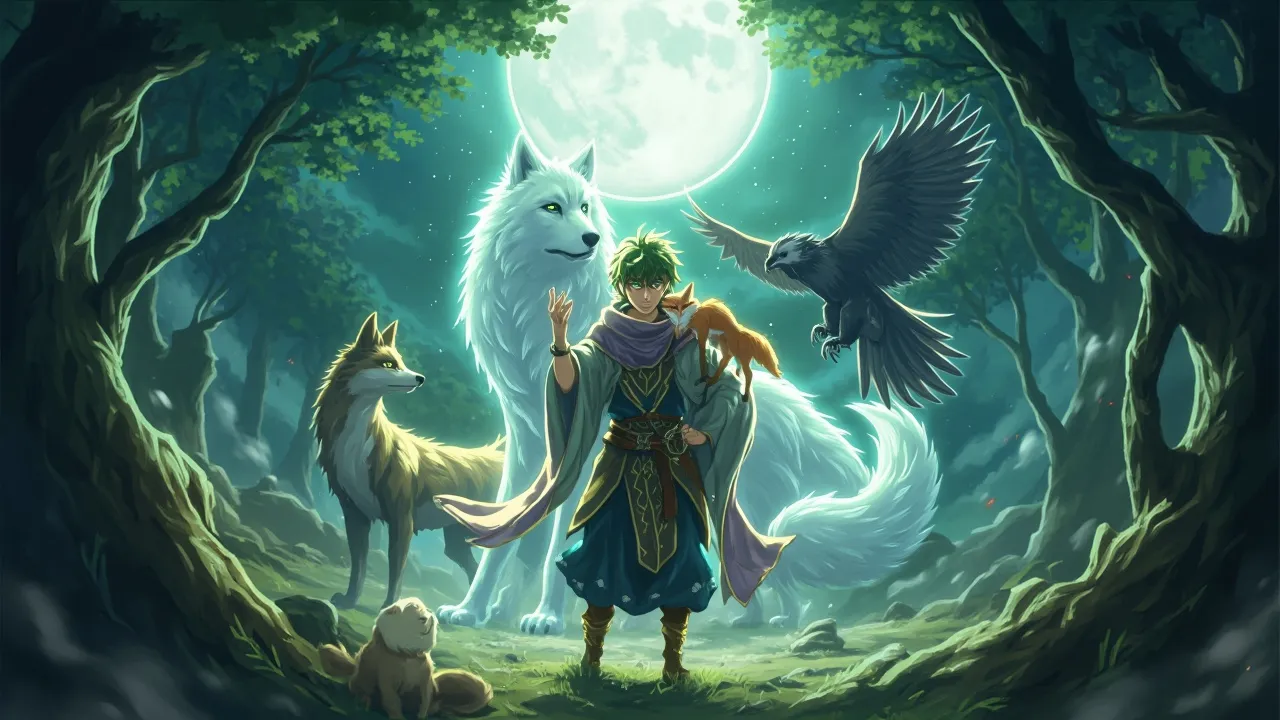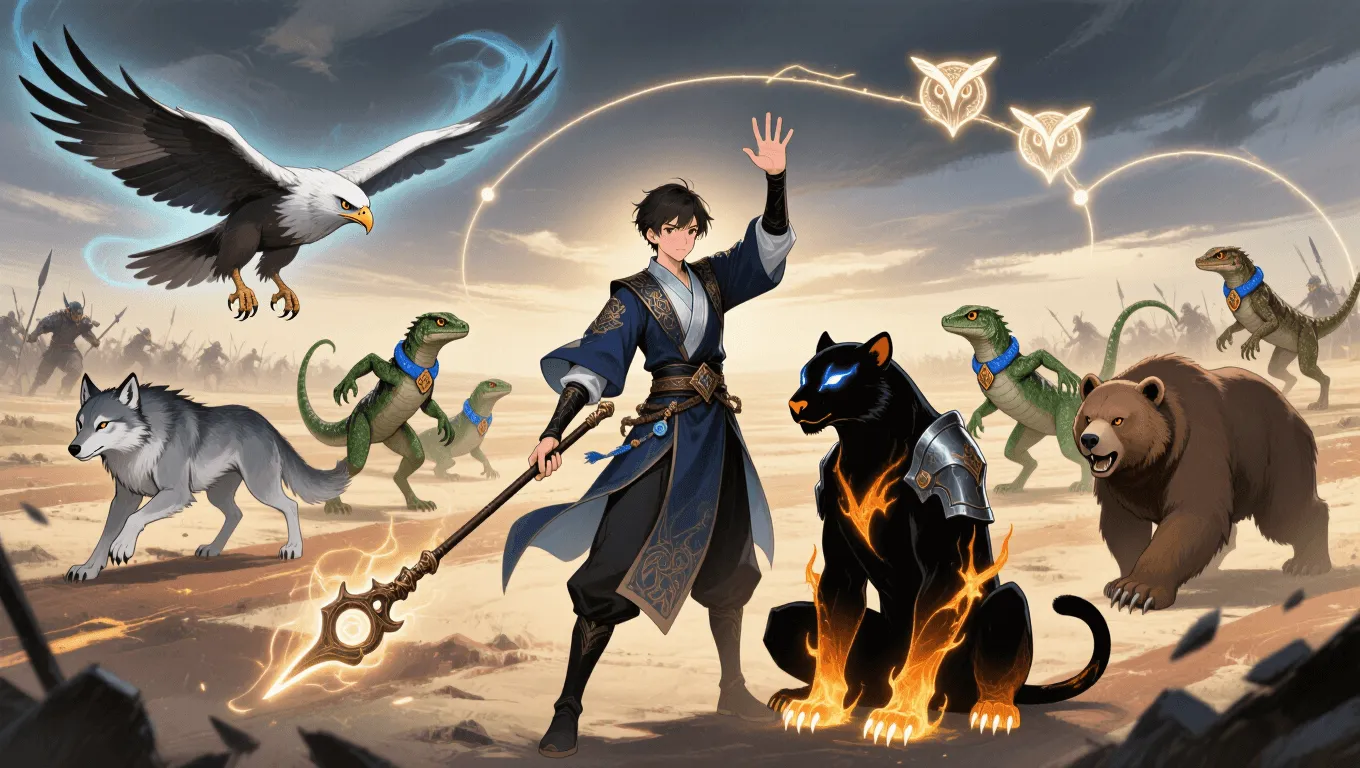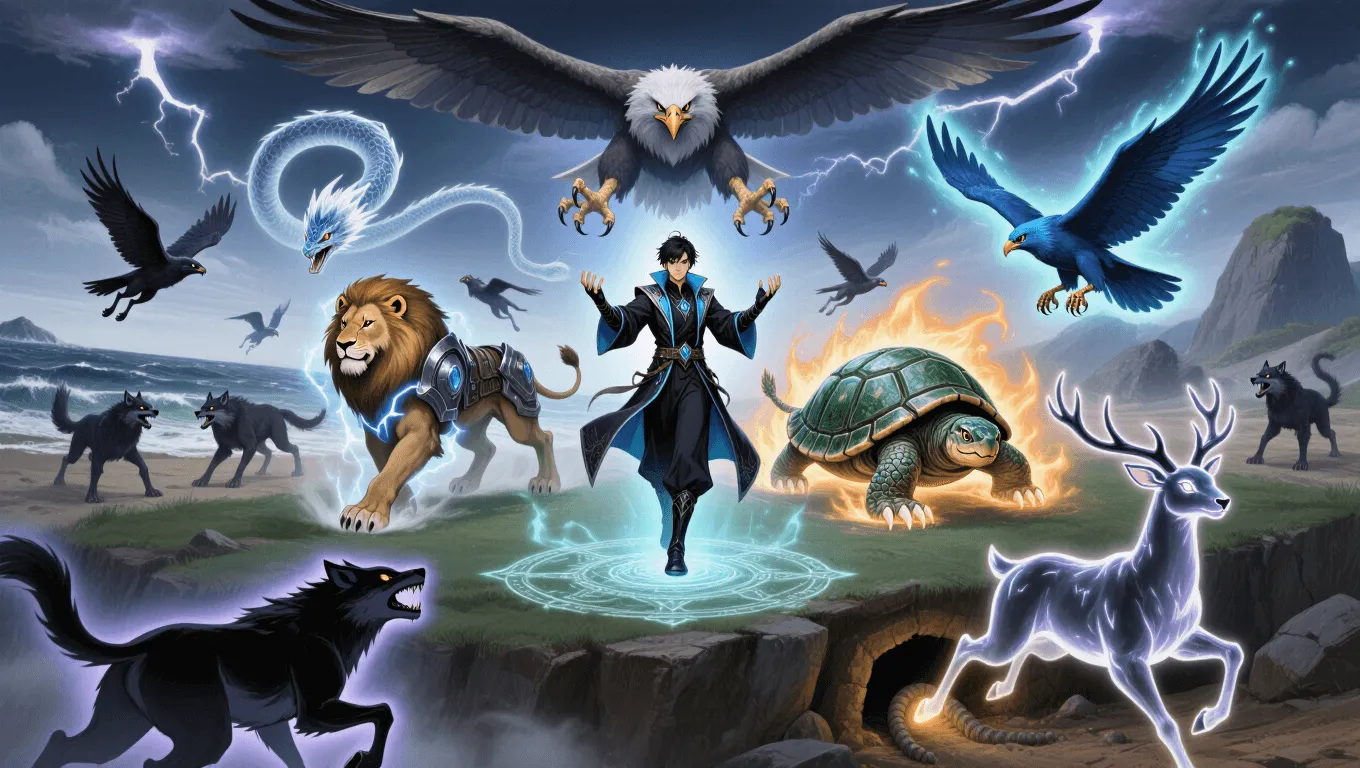Animal Summoning

Animal Summoning Video Demo 🎬
Table of Contents
Animal Summoning is a versatile superpower that allows a user to call, conjure, or manifest animals to fight, scout, or assist in tasks. Whether framed as beast summoning, familiar conjuration, or calling spirit animals, this ability turns the tide through mobility, senses, and numbers. This guide breaks down how Animal Summoning works, its tactical advantages, progression levels, counters, and the power combos that make it shine. For more powers like this, browse the full list on the Superpower Wiki or try your luck with our random superpower generator.
What Is Animal Summoning
Animal Summoning enables a character to bring animals into proximity instantly or rapidly, either from the surrounding environment, a bonded pocket realm, or through arcane/psychic channels. Depending on the user’s method—magic, psionics, nature rites, or technology—the summoned creatures may be real-world species (wolves, hawks, sharks), spectral avatars, or augmented “totem” versions with heightened attributes.
Unlike general animal control, which influences existing fauna, Animal Summoning focuses on manifesting or calling animals to the user on demand. The user may specialize in a specific taxonomy (avian summoning, aquatic companions, insects) or maintain a broad “zoological” repertoire. At advanced tiers, Animal Summoning can include hybrid beasts, swarms, or archetypal spirit animals that embody an ecosystem’s essence.
Core Abilities of Animal Summoning
Conjuration or Calling
A user can either conjure animals directly from a summoning space (ethereal kennel, druidic grove, spirit plane) or call nearby creatures across distance using signals, pheromones, or magic circles. Conjuration excels in barren environments; calling is quieter and can leverage native species.
Familiar Bond
Many summoners cultivate one or more familiars—signature companions with names, personalities, and scaled abilities. Familiars often persist between battles, learn tactics, and share senses with the summoner. Losing a familiar usually imposes a cooldown or emotional backlash.
Sensory Link & Remote Perception
Through a shared-sense tether, the summoner can “ride along” with an owl’s night vision, a bat’s echolocation, a bloodhound’s scent tracking, or a dolphin’s sonar. This turns Animal Summoning into a reconnaissance toolkit, ideal for stealth operations and search-and-rescue.
Role-Based Menagerie
A balanced summoner prepares animals for distinct roles:
-
Skirmishers: wolves, big cats, raptors for flanking and pressure.
-
Tanks: rhinos, hippos, or totemic bears for disruption and crowd control.
-
Aerial support: hawks, owls, swarms of insects for vision denial and harassment.
-
Aquatic units: sharks, orcas, barracudas for littoral ambushes and escort missions.
-
Utility creatures: mules for load-bearing, spiders or ants for micro-sabotage, messenger birds for silent comms.
Spirit and Totem Animals
Higher-level users summon spirit animals—semi-immaterial beasts with elemental overlays (ember-wolf, thunder-eagle, frost-stag). These constructs resist mundane harm, carry status effects, and can phase or traverse otherwise impassable terrain.
Summoning Circles, Calls, and Gestures
The technique varies by tradition:
-
Arcane: glyphs, circles, incantations drawing on pact energy.
-
Psionic: silent visualization and a mental “tug” to open a conduit.
-
Primal/Nature: drums, whistles, pheromone mists, or ritual offerings.
-
Techno-summoning: drone-assisted projectors or portals seeded with animal blueprints.
Application / Tactical Advantages in Combat
-
Force Multiplication: Animal Summoning provides immediate numerical superiority. Packs overwhelm single targets, pin casters, and interrupt ranged attackers.
-
360° Recon: Birds, bats, and insects provide live mapping, threat detection, and route optimization without exposing the summoner.
-
Zone Control: Stampedes, swarms, or large aquatic predators shape the battlefield, herd enemies, and deny choke points.
-
Disruption & Attrition: Raptor dives, wolf feints, and sting swarms break formations, drain stamina, and force miscasts.
-
Mobility & Extraction: Mount-capable animals grant fast traversal, vertical ingress (giant eagles), or water insertion (orcas, dolphins).
-
Status Effects: Venomous or spirit-infused animals inflict bleed, poison, fear, frostbite, or thunder-shock depending on the summoned type.
-
Resource-Light: Summons expend their own stamina, preserving the summoner’s personal health and powers for decisive moments.
Level: Level 1 🏙️, Level 2 🌇, Level 3 🌃
Level 1 — Caller of Beasts

-
Scope: One to three animals from a narrow category (e.g., canines or birds).
-
Range & Duration: Short range; brief duration or requires line of sight.
-
Control: Basic commands—attack, guard, scout, fetch.
-
Utility: Limited sensory link (blurred impressions rather than full vision).
-
Tactics: Ambush assistance, simple flanks, short scouting hops.
Level 2 — Keeper of the Menagerie

-
Scope: Medium roster with mixed roles (skirmishers, aerial, utility).
-
Range & Duration: Moderate range; extended durations with concentration.
-
Control: Parallel commands to multiple groups; conditional triggers.
-
Utility: Clear sensory sharing; map-quality reconnaissance.
-
Upgrades: One durable familiar with minor elemental traits; rudimentary spirit animals.
-
Tactics: Multi-lane flanks, coordinated strikes, battlefield denial via swarms or stampedes.
Level 3 — Totem Sovereign

-
Scope: Large-scale combat summons; spirit or totem animals with elemental overlays.
-
Range & Duration: Long range; independent operation past line of sight.
-
Control: Complex formations, autonomous behaviors, and self-healing familiars.
-
Utility: Full sensory immersion, shared resistances, and cross-terrain logistics.
-
Upgrades: Pocket biome or spectral preserve for instant conjuration in hostile environments.
-
Tactics: Area dominance, siege breaking, force-screen escorts, and combined-arms synergy with allied teams.
Limitations of using the Animal Summoning
-
Bandwidth & Focus: Commanding multiple units taxes cognition; misorders cause friendly interference or gaps in defense.
-
Environmental Constraints: Pure “calling” requires native fauna; deserts, deep space, or sterile facilities hamper response. Conjuration sidesteps this but costs more energy.
-
Summoning Cost & Cooldown: Each manifestation drains stamina, mana, psionic focus, or battery reserves. Overuse risks collapse or loss of familiar cohesion.
-
Loyalty & Morale: Real animals possess instincts. Hunger, fear, loud shocks, or pain can break control without reinforced bonds.
-
Visibility & Noise: Packs and flocks are conspicuous. Stealth-heavy missions may be compromised by tracks, scents, or sounds.
-
Collateral & Ethics: Large predators and stampedes endanger bystanders and infrastructure; responsible summoners must choose species and tactics carefully.
-
Countermeasures: Wards, anti-summon fields, sonic deterrents, scent scramblers, and anti-pheromone sprays can blunt or nullify the power.
Weakness against what other superpowers
-
Nullification/Anti-Magic Fields: Collapse conjured beasts or block circles entirely.
-
Mind Control (Zoopathy): Enemy beast-speakers can seize or confuse summoned animals.
-
Sonic Manipulation: High-decibel bursts panic or incapacitate many species.
-
Fear Induction/Terror Auras: Animals break ranks faster than trained soldiers under psychic dread.
-
Pheromone Control & Scent Spoofing: Redirects or jams command channels for insect or mammal summons.
-
Technopathy & Drone Swarms: Machines ignore intimidation and venom, out-trading organic packs in attrition fights.
-
Barrier/Force Fields: Stop charges, flight paths, and stampedes cold.
-
Extreme Elemental Control: Wildfires, blizzards, and vacuum or toxic atmospheres devastate non-spirit animals and shorten deployments.
-
Precision Snipers/Marksmen: Rapidly eliminate key familiars, forcing cooldowns and morale shocks.
Synergistic Power Combos
-
Animal Empathy/Beast Communication + Animal Summoning: Enhances trust, complex maneuvers, and rapid re-tasking mid-fight.
-
Illusion Casting: Creates false prey or threats to herd enemies into kill zones where summoned packs wait.
-
Plant or Earth Manipulation: Grow cover, shape terrain, or funnel foes into ambush corridors while animals harry their flanks.
-
Teleportation/Portal Craft: Drop shock units (e.g., tiger strike team) directly behind enemy lines; exfiltrate wounded allies via aerial mounts.
-
Healing/Regeneration Auras: Sustain familiars and prolong swarms in protracted engagements.
-
Weather Control: Updrafts boost aerial scouts; fog conceals approach; rain carries scent trails to trackers.
-
Soundcraft/Whistle Mastery: Ultrasonic commands execute silent, battlefield-wide orders without revealing position.
-
Tech Augmentation: Lightweight barding, camera harnesses, and comms rigs turn summons into a distributed sensor network.
-
Stealth/Invisibility: Cloaked raptors and shadow-wolves excel at surgical strikes and asset retrieval.
Known Users
-
Klarion the Witch Boy — A chaos-tinged sorcerer whose bonded familiar Teekl exemplifies the loyal-but-lethal companion model, often serving as scout, enforcer, and emotional anchor.
-
Zatanna Zatara — A stage-mage turned Justice League powerhouse; her backward-spoken spells can conjure or call creatures for specific tasks, from distraction to protection.
-
Doctor Strange — While primarily a mystic defender, he periodically employs conjured entities resembling earthly beasts to restrain or overwhelm foes when precision control is needed.
-
Enchantress — Known to summon bestial manifestations in certain storylines, illustrating how volatile magic can produce powerful but temperamental animal constructs.
If you’re exploring more powers, visit the full Superpower Wiki or spin a new idea with the random superpower generator.
